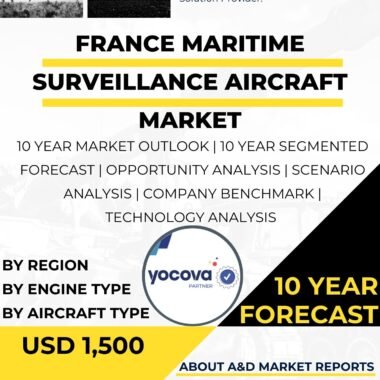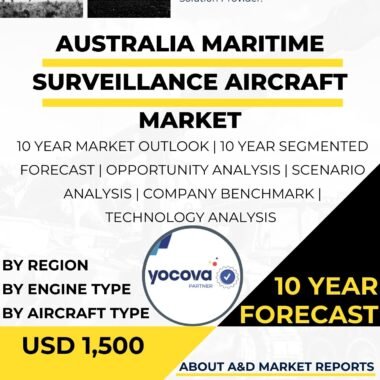Description
The China Maritime Surveillance Aircraft Market is a rapidly expanding and strategically significant sector within the country’s defense industry. Maritime surveillance aircraft play a crucial role in safeguarding China’s territorial waters, protecting its maritime interests, and ensuring maritime security. These aircraft are specifically designed for long-range surveillance, reconnaissance, and monitoring of maritime activities, including detecting and tracking vessels, conducting search and rescue operations, and supporting anti-submarine warfare. China’s focus on maritime expansion, territorial defense, and technological advancement has driven the growth and development of the Defense Maritime Surveillance Aircraft Market.
China has significantly invested in research and development to develop indigenous maritime surveillance aircraft technologies. The country recognizes the strategic importance of maritime surveillance capabilities in ensuring its maritime security and protecting its territorial waters. As a result, there has been a strong emphasis on the development of advanced maritime surveillance aircraft platforms to meet the specific requirements of China’s maritime operations.
One of the key drivers of the China Maritime Surveillance Aircraft Market is the government’s push for technological self-sufficiency. China aims to reduce its dependence on foreign suppliers and enhance its domestic defense industrial base. To achieve this goal, significant investments have been made in research and development, leading to notable progress in the design and production of indigenous maritime surveillance aircraft platforms. Chinese defense companies, in collaboration with research institutes and universities, have been actively working on the development of maritime surveillance technologies to meet the specific requirements of China’s maritime operations.
Furthermore, China’s growing maritime interests and the need for comprehensive maritime domain awareness have necessitated the development of advanced maritime surveillance aircraft. The country’s expansive territorial waters, extensive coastlines, and increasing maritime activities require aircraft that can provide long-range surveillance, real-time monitoring, and accurate identification of maritime vessels. Chinese defense companies have been actively engaged in developing and enhancing maritime surveillance aircraft platforms to meet the demanding requirements of maritime operations, ensuring improved operational capabilities and maritime domain awareness.
Moreover, China benefits from a robust and well-established aerospace and defense industry, which provides a solid foundation for the development and production of maritime surveillance aircraft platforms. The country possesses several state-owned and private companies with expertise in aerospace engineering, avionics, radar systems, and maritime surveillance technology. These companies have the necessary infrastructure, resources, and technical know-how to design, develop, and produce state-of-the-art maritime surveillance aircraft. The presence of a strong industrial base promotes collaboration and knowledge sharing, further boosting the growth of the Defense Maritime Surveillance Aircraft Market.
Additionally, the China Defense Maritime Surveillance Aircraft Market has witnessed increasing international attention and strategic implications. China’s advancements in maritime surveillance aircraft capabilities have garnered global interest and have contributed to the country’s growing influence in the defense industry. The export potential of Chinese maritime surveillance aircraft to other countries also adds to the growth of the market, establishing China as a significant player in the global maritime surveillance industry.
However, the China Defense Maritime Surveillance Aircraft Market also faces challenges. Quality, reliability, and performance are crucial considerations as Chinese defense companies strive to meet the standards set by established international maritime surveillance aircraft manufacturers. Continuous investments in research and development, as well as quality control and assurance processes, are necessary to gain the trust of domestic and international customers.
Moreover, adapting to evolving maritime security challenges, such as enhanced sensor technologies, data integration, and interoperability, poses challenges in terms of technology integration, system compatibility, and coordination with other maritime surveillance assets. Chinese defense companies must address these challenges to ensure that their maritime surveillance aircraft platforms remain technologically advanced and operationally effective.
In conclusion, the China Maritime Surveillance Aircraft Market is witnessing rapid growth and development. The government’s focus on technological self-sufficiency, combined with investments in research and development, has led to significant advancements in indigenous maritime surveillance aircraft technologies. China’s growing maritime interests, robust aerospace and defense industry, and international attention contribute to its position as a competitive player in the global maritime surveillance market. Addressing quality control, technological advancements, and promoting international collaborations will be crucial for further growth and success in this dynamic sector.




